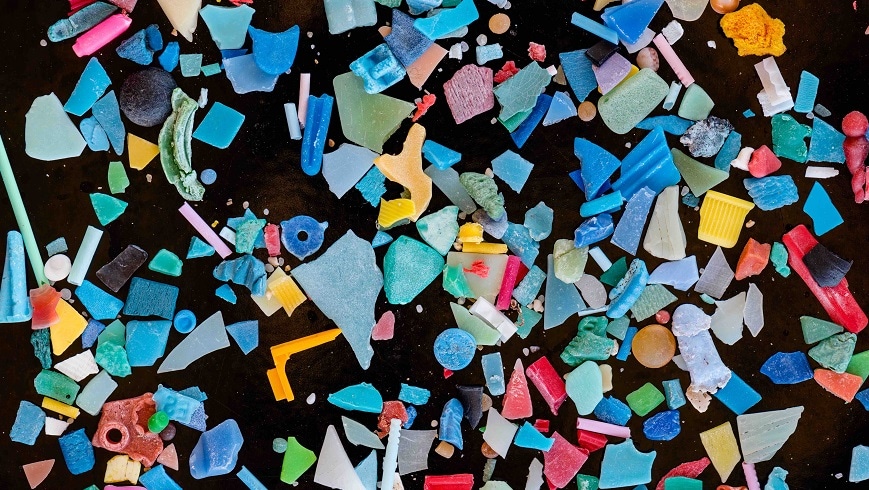May 14 2019
Although almost all have seen images such as sea birds in danger of going extinct due to their belly full of plastic garbage and accumulation of plastics as big as islands, there are also plastic particles that are hardly visible to the naked eye—microplastics.
 Microplastics can be found in all kinds of colors and shapes. (Image credit: Bernd Nowack)
Microplastics can be found in all kinds of colors and shapes. (Image credit: Bernd Nowack)
The trouble caused by these tiny particles has not yet been investigated. Currently, scientists from Empa have performed the world’s first risk assessment for microplastics in rivers and lakes. The research determines that aquatic organisms in Europe are not (yet) severely at risk.
Microplastics are as small as a grain of dust but of high international significance. Although the word “microplastics” is known to many, its dangers are virtually uninvestigated. In the recent past, pollution due to plastics has become a growing environmental problem. Many videos and media reports focus on this problem. Although the dangers of huge plastic pieces for animals are very difficult to neglect, there is practically nothing about the threats posed by microplastics. However, what is microplastics anyway?
Phenomenon of Microplastics
Microplastics consist of less than 5-mm plastic particles and are of two types: (a) plastic granules, which are used as starting material for the production of various plastic products and for cosmetics and household articles (primary microplastics); and (b) plastic fragments, which are produced in the environment when huge plastic parts decompose, for instance, due to weathering or mechanical stress (secondary microplastics).
Fiber fragments are a key source of secondary microplastics. These are discharged into the wastewater while washing synthetic textiles. Primary microplastics are discharged into wastewater during cleaning processes, such as in industrial plants, showering, or house cleaning. Wastewater treatment plants are not built for this purpose, but they are very efficient in filtering microplastics out of wastewater. However, more microplastics are distributed worldwide in soil and water—and the trend is toward a higher level.
No Risk for Europe
Can these small particles be an issue for the environment? Bernd Nowack, the environmental researcher and Empa researcher, studied the influence of microplastics on the environment. Nowack, in collaboration with Véronique Adam, has currently performed the world’s first risk assessment for freshwater fish and other aquatic organisms. The scientists have evaluated and compared the findings of many studies.
To examine whether there is an environmental risk, they used a method based on the assessment of environmental risks from chemicals. The scientists made a comparison between real measured water pollution by microplastics and threshold values for possible harmful effects in various organisms. If the thresholds and pressures overlap, there is a real risk to the environment.
Result: In Europe, currently, there is no danger to the environment because the microplastic concentrations actually measured in the water researched to date are well below the threshold values. But it is widely known that Asia is particularly affected by the issues of plastics. Nowack and Adam also discovered an overlap in the data from Asia between the threshold values and the pressures, even though this is very small.
Sewage Treatment Plants for Protection
From these two examples, the scientists discovered differences between various regions across the globe with regard to pollution due to microplastics and the resulting environmental risk. Particularly in regions without or with only a limited functioning wastewater treatment system, there are higher environmental concentrations. That is the reason why well-functioning wastewater treatment plants are specifically important for “protecting” the environment from microplastics.
Nowack’s conclusion: “There is currently no evidence that microplastics pose a risk to the environment in Europe.” But more research is necessary to eliminate negative consequences for sure because the overall data basis is still quite scarce, especially regarding local hotspots of microplastics in the environment. For instance, Nowack suggests controlled studies with standard methods and complete particle characterization. His own research group “Environmental Risk Assessment and Management” in Empa’s “Technology and Society” department in St. Gallen will certainly further investigate on the topic. Similar risk assessments for microplastics in soils and a study for the oceans are scheduled. At present, research projects involve quantifying microplastic flows into the environment and determining the formation of microplastics during weathering and washing.